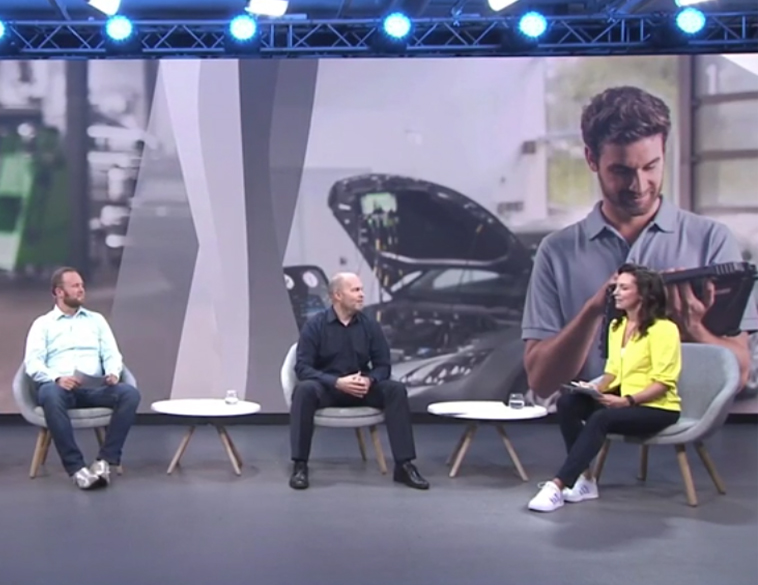Bosch reveals its latest ESI[tronic] 2.0 platform designed to give independent collision and service shops the full range of diagnostic capability.
If you own and operate a collision centre and (particularly) if you also perform in-house mechanical repairs, as a way to control processes and help cut down cycle times, access to repair information is likely a top priority.
With growing concerns around proper repairs, as well as cybersecurity and also brand protection, many OEMs have been focusing on both certification programs for collision repairs and also more restrictive access when it comes to mechanical repair information.
In fact, it could be said that the concept of “all-makes or models” collision or mechanical repair might be going the way of the dinosaur given the cost for many collision and independent service centres in having multiple OEM subscriptions and equipment updates.
Viable solution
At Automechanika Frankfurt 2021, Bosch Automotive Aftermarket hosted a panel discussion that looked into the future of diagnostics and viable solution for independent service shops and collision centres.
Hosted by Business Coach Helena Felixberger, the panel featured Florian Lange, Expert Product Management ESI[tronic], Bosch Automotive Aftermarket; Henrik Plars, Head of Global Product Management, Diagnostics, Bosch Automotive Aftermarket and Ernst Schlenker Head of Sales, Workshop Test Equipment, Europe; Bosch Automotive Aftermarket.
Ernst Schlenker noted that security gateways are becoming an increasing issue for independent shops and in many cases, while access is often granted to passive diagnostics functions such as door locks and anti-lock braking systems, resetting diagnostic error codes or recalibrating ADAS systems is often not possible, unless the shop spends the money to buy licensed software from individual OEMs, which in most cases, simply isn’t cost effective.
Bosch Automotive Aftermarket is looking to change that via its ESI[tronic] diagnostics platform which, in 2.0 form, now incorporates a new function—Secure Diagnostic Access (SDA).
With this new feature, a technician only needs to register once in the ESI[tronic] platform to have access to vehicle diagnostics information from multiple OEMs and multiple vehicles, instead of registering and paying for each brand separately.
Florian Lange explained that with SDA, the technician user ID function also allows them to access other Bosch applications through the platform and, once they are logged in, can access protected repair data information.
More brands to follow
In Europe, the SDA function was introduced in August 2021 and currently, the platform enables technicians to access repair data from several OEMs, notably Volkswagen, Audi and European brands SEAT and Skoda.
Lange explained that this is only the beginning and due to Bosch’s longstanding relationships with OEMs worldwide, more brands and vehicle models will be accessible through the portal in the coming months and years.
Besides the SDA function, ESI[tronic] 2.0 also provides technicians with monthly content updates and troubleshooting/repair information—everything from seat function and operation, to headlight and sensor calibration/replacement.
Created in cooperation with OEMs; this repair information includes process, specific repair information, as well as images and other original OEM repair documents.
During the presentation, the panelists illustrated headlight repair/replacement and seat operation/function as some examples.
Besides granting independent shops access to repair information across multiple OEMs and functions, ESI[tronic] also includes what’s called Experience-Based Repair (EBR).
Henrik Plars explained that EBR allows technicians working in the bay to have access to a whole online system and community of repair professionals who can actively help the tech solve a particular problem on a vehicle they are working on.
EBR presents known fixes for specific problems on specific make and model vehicles.
These fixes, which have been performed by experienced techs are then presented on the Bosch ESI[tronic] platform and evaluated by real engineers and technicians to validate their credibility as a proper fix for a specific make and model.
Minutes, not hours
Plars stressed that the major benefit of having this access means that complex problems can be solved within minutes instead of taking hours, or even days to figure out, which costs time and money for the repair shop.
Moving forward, Bosch will have a vehicle’s date of manufacture integrated into the ESI[tronic] software, improve the quality of data and repair information access for the technician and the shop, enabling faster and better repairs.
Plars also said that in Europe, Bosch is working with BMW on a pilot project entitled First Notice of Service (FNOS) where a new, connected vehicle can alert the driver if a repair or service is required and allows that driver to choose the repair shop of their choice instead of defaulting to the nearest OEM dealer.
“We want vehicle owners to have the freedom to decide which workshop they are going to take their car to,” said Plars, while Lange added that the system allows “independent workshops to really benefit from this [connected car] ecosystem.”



